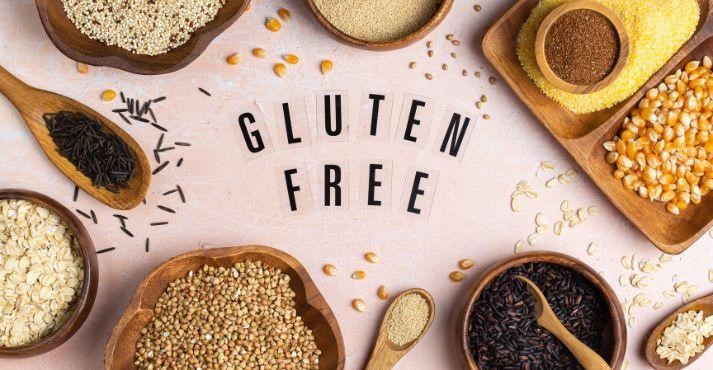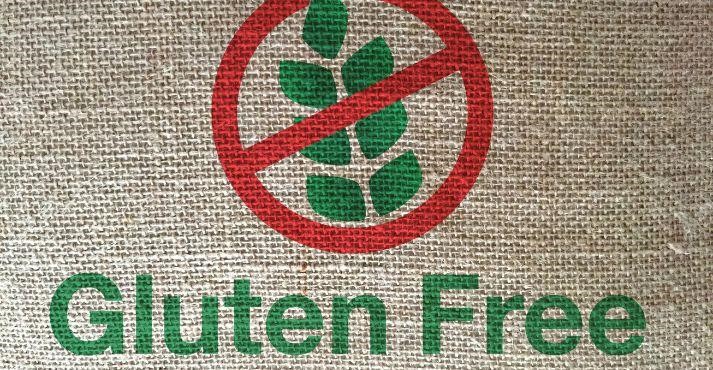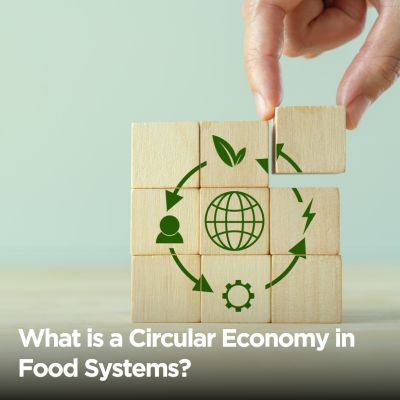Have you ever wondered about the buzz surrounding “gluten-free” foods? What does gluten-free- mean? It is one of the top searched trends.
Let’s break it down: “Gluten-free” means foods without gluten, a protein in wheat, barley, and rye. But it’s more than just a food trend; it’s crucial for individuals with gluten-related issues like celiac disease or sensitivity.
In Southeast Asia, particularly in places like Singapore, the interest in gluten-free living is skyrocketing. People are starting to recognize its benefits.
According to Statistica, the gluten-free market is expected to be valued at 14 billion U.S. dollars by 2032, which is more than twice the 2022 market value. This reflects a clear shift toward healthier eating habits in the region.
So, let’s explore gluten-free living and see how it’s shaping our food choices in Southeast Asia.
What is Gluten?
Gluten is a protein in certain grains, such as wheat, barley, and rye. It plays a crucial role in the texture and structure of many foods, especially those made from wheat flour. Imagine it as the “glue” that holds the dough together, giving bread its chewiness and pasta its elasticity.
There are two main proteins within gluten: gliadin and glutenin. These proteins can trigger adverse reactions in individuals with gluten-related disorders. In celiac disease, an autoimmune disorder, the body mistakenly attacks the small intestine’s lining when gluten is ingested.
This can lead to various symptoms like digestive issues, fatigue, and nutrient deficiencies. People with celiac disease need to avoid gluten to prevent long-term health complications strictly.
Similarly, individuals with a wheat allergy experience immune system reactions to wheat proteins, including gluten.
These reactions can range from mild itching or swelling to severe anaphylaxis, requiring immediate medical attention. This is why it’s essential to know food allergens from the get-go.
Non-celiac gluten sensitivity is another condition where individuals experience symptoms similar to those with celiac disease but without the immune system damage seen in celiac disease.
While the exact mechanisms are still unclear, avoiding gluten helps alleviate symptoms for those with gluten sensitivity.
Understanding gluten and its effects on the body is crucial for individuals with gluten-related disorders to make informed dietary choices and manage their health effectively.
What Does Gluten-Free Mean?

“Gluten-free” means that a food product doesn’t contain gluten, a protein in wheat, barley, and rye. When a food is labeled as gluten-free, it’s safe for people with gluten-related disorders like celiac disease or gluten sensitivity to consume without experiencing adverse health effects.
Regulatory guidelines and standards exist for gluten-free labeling:
- In Singapore, the Singapore Food Agency sets regulations for food that include gluten-free labeling, ensuring that products meet specific criteria to be labeled as such.
- Internationally, the Food and Drug Administration (FDA) in the United States and the European Union’s regulations specify that foods labeled as gluten-free must contain less than 20 parts per million (ppm) of gluten. This threshold is considered safe for most individuals with gluten-related disorders.
Benefits of a Gluten-Free Diet
In recent years, the popularity of gluten-free diets has surged, with many individuals opting to eliminate gluten from their meals. But what exactly are the benefits of going gluten-free?
Some individuals experience gluten intolerance, a condition distinct from celiac disease. While not an autoimmune disorder, gluten sensitivity can cause gastrointestinal discomfort and other symptoms.
Let’s look into the potential advantages of this dietary approach and understand how it can positively impact your health and well-being.
1. Improved Digestion and Gut Health
A gluten-free diet can improve digestion and gut health. For individuals with celiac disease or gluten sensitivity, removing gluten from their diet can relieve symptoms like stomach pain, diarrhea, and indigestion.
When avoiding gluten-containing foods, the inflammation in the gut decreases, allowing the digestive system to function more effectively. This can result in smoother digestion, better nutrient absorption, and improved gut health.
2. Reduced Bloating and Gas
A gluten-free diet’s noticeable benefits are reduced bloating and gas. Gluten-containing foods can cause bloating and gas in some individuals, particularly those with gluten sensitivity.
Eliminating gluten can diminish these uncomfortable symptoms, creating a more comfortable and pleasant digestive experience.
3. Weight Management
For some individuals, adopting a gluten-free diet may support weight management efforts. While going gluten-free doesn’t guarantee weight loss, it can lead to healthier eating habits, such as choosing whole, unprocessed foods over gluten-containing processed products.
Reducing gluten intake may also decrease cravings for high-calorie, low-nutrient foods, potentially contributing to weight management goals.
4. Increased Energy Levels
Going gluten-free may also result in increased energy levels for some individuals. For those with gluten-related disorders like celiac disease or gluten sensitivity, consuming gluten can lead to fatigue and lethargy due to the body’s immune response.
Eliminating gluten from the diet may stabilize energy levels, allowing individuals to feel more alert and energized throughout the day.
5. Improved Mental Clarity and Brain Function
Another benefit of a gluten-free diet is improved mental clarity and brain function. Some individuals report experiencing brain fog, difficulty concentrating, and memory issues when consuming gluten.
After removing gluten from their diet, they may experience clearer thinking, enhanced focus, and better cognitive function. This can improve productivity, better decision-making, and a sharper mind overall.
Common Sources of Gluten

Gluten can hide in many foods, making it essential to know where to look to avoid it. Here are some familiar sources of gluten in the diet:
Wheat-Based Foods
Wheat is a primary source of gluten and is found in various products like bread, pasta, cereal, and flour. These staples are often a significant part of many people’s diets but can trigger adverse reactions in those with gluten-related disorders.
Barley And Rye
Barley and rye also contain gluten and are commonly found in foods like beer, malt beverages, barley-based soups, and rye bread. These grains are often used in food processing and can sneak into unexpected places, so it’s crucial to read labels carefully.
Baked Goods
Many baked goods contain gluten, including cakes, cookies, pastries, soft and hard pretzels, and doughnuts. These delicious treats can be tempting but may cause discomfort for gluten-sensitive people.
Processed Foods
Gluten can also be hidden in processed foods, including sauces, gravies, salad dressings, and processed meats. Ingredients like wheat flour or modified food starch may be used as thickeners or fillers, so it’s essential to scrutinize labels for hidden sources of gluten.
Tips for Identifying Hidden Sources of Gluten
- Read labels: When shopping for packaged foods, carefully read ingredient labels to check for gluten-containing grains like wheat, barley, and rye. Look for gluten-free certifications to ensure the product meets gluten-free standards.
- Be wary of cross-contamination: In restaurants, gluten-containing ingredients may come into contact with gluten-free foods during preparation, leading to cross-contamination. Ask about gluten-free options and how dishes are prepared to minimize the risk.
- Ask questions: Don’t hesitate to inquire about gluten-free dining options. Speak to the restaurant staff about your dietary needs and any concerns you may have regarding gluten cross-contamination.
- Choose naturally gluten-free foods: Focus on whole, unprocessed foods like fruits, vegetables, lean proteins, and gluten-free grains like rice, quinoa, and oats (if labeled gluten-free) to minimize the risk of unintentional gluten consumption.
Gluten-Free Alternatives and Substitutes
Southeast Asia’s ever-growing food market has an increasing array of gluten-free alternatives and substitutes to cater to varied dietary needs. Here are some trendy options in the region:
- Gluten-Free Grains: Adopt a wide variety of naturally gluten-free grains such as rice, corn, quinoa, millet, sorghum, and teff. These grains are staples in many Southeast Asian cuisines, offering versatile options for creating hearty meals and snacks.
- Gluten-Free Flours: Swap traditional wheat flour for gluten-free alternatives like almond flour, coconut flour, chickpea flour, tapioca flour, and potato starch. These flours can be found in specialty stores and markets across Southeast Asia, enabling you to quickly whip up gluten-free baked goods and savory dishes.
- Asian Rice Noodles: Enjoy the variety of rice noodles commonly used in Southeast Asian cuisine. These gluten-free noodles come in different shapes and sizes, perfect for creating flavorful stir-fries, soups, and salads while catering to gluten-free dietary preferences.
- Gluten-Free Pasta and Bread: Explore the diverse selection of gluten-free pasta, bread, and baked goods available in the region. Look for gluten-free pasta made from rice, corn, quinoa, chickpeas and gluten-free bread crafted from alternative grains like sorghum or millet. Gluten-free beers are increasingly making their mark in Southeast Asia, providing refreshing beverage options for those with gluten sensitivities.
Tips for Living Gluten-Free

Living gluten-free can be a rewarding journey with the right tips and strategies. Here are some practical tips to help you navigate life on a gluten-free diet:
- Reading Food Labels: Get into the habit of carefully reading ingredient lists on packaged foods. Look out for common gluten-containing ingredients such as wheat, barley, rye, and their derivatives. Look for gluten-free labeling, which indicates that a product meets regulatory standards for gluten content.
- Cooking and Meal Preparation: When preparing meals at home, opt for naturally gluten-free ingredients like fruits, vegetables, lean meats, fish, poultry, eggs, dairy, legumes, and gluten-free grains. Use separate cooking utensils, cutting boards, and kitchen equipment to prevent cross-contamination with gluten-containing foods.
- Dining Out: Research restaurants that offer gluten-free options or have dedicated gluten-free menus before dining out. When ordering, communicate your dietary needs clearly to restaurant staff and ask about gluten-free preparation methods. Be wary of cross-contamination in restaurant kitchens and choose simple, naturally gluten-free dishes when in doubt.
- Stocking Your Pantry: Stock your pantry with gluten-free staples like flour, pasta, bread, crackers, and snacks. Check out Asian markets and specialty stores for a wide range of gluten-free products tailored to your culinary preferences.
- Building Balanced Meals: Focus on building balanced meals that include a variety of nutrient-dense foods such as lean proteins, colorful fruits and vegetables, healthy fats, and gluten-free grains. Experiment with gluten-free recipes and cooking techniques to keep your meals flavorful and satisfying.
- Seeking Support: Connect with online communities, support groups, or local organizations for gluten-free individuals. Share experiences, tips, and recipes with others who understand the challenges and rewards of a gluten-free lifestyle.
Gluten-Free Certification and Labeling
Gluten-free certification and labeling are crucial in helping consumers identify safe and trustworthy products for their gluten-free diets. Certification assures that a product has undergone rigorous testing and meets specific standards for gluten content.
The Gluten-Free Certification Organization (GFCO) maintains stringent standards and rigorous testing processes. GFCO-certified products undergo thorough testing to ensure compliance with gluten-free requirements, with a maximum gluten content of 10 parts per million (ppm).
This globally recognized certification logo instills confidence in consumers regarding the gluten-free status of certified products.
In Southeast Asia, the Association of Southeast Asian Nations (ASEAN) has established gluten-free labeling standards to harmonize regulations across member countries. These standards ensure consistency in labeling practices, promote consumer safety, and facilitate regional trade.
Products meeting ASEAN standards display labels indicating their gluten-free status, enabling informed choices for Southeast Asian consumers.
Having clear and reliable gluten-free labeling helps individuals with gluten-related disorders, such as celiac disease or gluten sensitivity, avoid potential health risks associated with gluten consumption.
It also simplifies the shopping process, allowing consumers to quickly identify safe options that align with their dietary needs and preferences.
Challenges and Considerations in Gluten-Free Living
The gluten-free lifestyle comes with challenges and considerations, ranging from nutritional concerns to social dynamics. Addressing these aspects is crucial for a holistic understanding of the gluten-free journey.
Nutrient Deficiencies

One notable challenge is the potential for Nutrient Deficiencies in gluten-free diets. Since many gluten-containing grains are enriched with essential nutrients, individuals may struggle to obtain adequate levels of specific vitamins and minerals.
It’s imperative to plan a well-rounded, nutrient-dense gluten-free diet to address this concern.
Higher Costs
Another hurdle is the perception of Higher Costs associated with gluten-free living. Gluten-free products are often priced higher than their gluten-containing counterparts.
This financial aspect can concern individuals managing a gluten-free lifestyle, requiring thoughtful budgeting and strategic shopping.
Social Considerations
The Social Considerations of a gluten-free diet must be considered. Navigating social events, dining out, or attending gatherings may present challenges, as gluten is prevalent in many traditional foods.
Individuals may need to communicate their dietary needs effectively and find inclusive alternatives in various social settings.
Addressing Challenges in Gluten-Free Living
Addressing the Challenges in Gluten-Free Living requires a proactive approach. Education and awareness about gluten-free nutrition, budgeting strategies, and practical communication skills can empower individuals to overcome these challenges.
Seeking guidance from healthcare professionals and nutritionists can also be valuable in developing a well-balanced gluten-free lifestyle.
Nutritional Aspects of Gluten-Free Diets
Understanding the Nutritional Aspects of Gluten-Free Diets is crucial for maintaining optimal health. While gluten-free alternatives are available, individuals must be mindful of obtaining essential nutrients.
This includes incorporating a variety of naturally gluten-free whole foods, exploring fortified products, and, when necessary, considering supplements under professional guidance.
Social Adaptation to Gluten-Free Lifestyles
Adapting socially to a gluten-free lifestyle involves cultivating effective communication and a positive mindset.
Individuals can actively advocate for their dietary needs, research gluten-free-friendly restaurants, and engage in open conversations with friends and family about their dietary choices.
Building a supportive social network is vital to navigating the challenges of gluten-free living.
Overcoming Challenges in Gluten-Free Diets
Overcoming Challenges in Gluten-Free Diets requires resilience and a proactive mindset.
Sharing experiences and tips within the gluten-free community, staying informed about gluten-free product offerings, and continuously exploring new recipes can contribute to a more enjoyable and sustainable gluten-free lifestyle.
Nutritional Considerations in Gluten-Free Living
Diving into Nutritional Considerations in Gluten-Free Living involves prioritizing a well-rounded diet.
Monitoring nutrient intake, focusing on naturally gluten-free whole foods, and collaborating with healthcare professionals for personalized advice contribute to a comprehensive approach to nutrition in the context of a gluten-free lifestyle.
Conclusion
In wrapping up our exploration of gluten-free living, it’s evident that this dietary choice extends far beyond a passing trend. Its significance lies in fostering individual health and inclusive dietary practices that resonate with a growing community.
As we conclude, it’s essential to appreciate the multifaceted aspects of gluten-free living.
Beyond avoiding specific proteins, it symbolizes a commitment to well-being, a recognition of diverse dietary preferences, and an acknowledgment of the evolving landscape of culinary choices.
Looking ahead, the trajectory of gluten-free living continues to evolve, driven by an increasing awareness of health-conscious decisions.
The gluten-free community is not just a niche; it’s a dynamic force shaping the future of dietary preferences.
As we navigate the future, the gluten-free landscape promises to be more inclusive, vibrant, and aligned with the ever-changing tapestry of wellness and lifestyle choices.





























